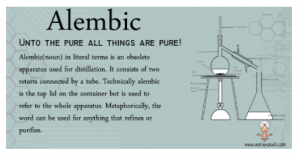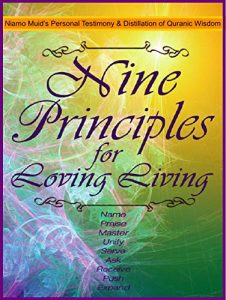3 Essential Oil Procedures of Production
- 20
- Nov
This post on Three (3) Essential Oil Procedures concerning production continues our discussion of “nature’s living energy” and how the HealMobile delivers same. There are actually nine ways* oils are created and produced, and the three we focus on below cover the methods for getting the oils bottled and into your hands.
First I want to emphasize that I use essential oils much the same way I use food and drink–the right one for the right time. In working with clients I also use the right oils for the right time, unless we have an agreement beforehand not to use them.
Let me explain. You see, using pure oils on myself helps to change and prepare my body-mind-spirit for interaction with you. My aura feels cleaner and protected, and my vibrational frequency feels very high. This is to your benefit for the best service from the HealMobile.
 That said, you should know that nurseries, clinics, hospitals, social programs, and more diffuse oils into the air to increase feelings of calm among visitors. This trend is increasing. See list of places now using essential oils across the U.S.A.
That said, you should know that nurseries, clinics, hospitals, social programs, and more diffuse oils into the air to increase feelings of calm among visitors. This trend is increasing. See list of places now using essential oils across the U.S.A.
Now for the subject at hand. Pure, aroma-laden oils are distilled, pressed or extracted. From this process, their original plant or earth matter becomes highly concentrated. Consequently, when you use pure oils, you enhance your energeticism — you have a higher, more healthy vibrational frequency than you had before.
Oil Procedures of Production
Oil of Lavender, when made by passing flowers through a glass alembic, surpasses all other perfumes. — Dioscordides, De Materia Medica

I recommend oils to everyone; those who enjoy aromas or not. Aromatherapy is a misleading term anyway, since so much body-mind interaction occurs that seems unrelated to smell or scent.
According to Kurt Schnaubwelt, “the oils exert much of their therapeutic effect through their pharmacological properties and their small molecular size, making them one of the few therapeutic agents to easily penetrate bodily tissues.”
Here are old and new ways essential oils procedures have yielded the healing “nature’s living energy.”
Steam Distillation Oil Procedure
The steam causes lodged oil sacs to burst open. They are then be carried by the steam into a chilled condenser. The steam becomes water again, retaining some plant essence as a hydrosol. (In hydro-distillation the plant material is boiled. See this informative page).
According to Schnaubelt, the words essence, quintessence or essential oils conveyed degrees of refinement associated with distillation.
“Cold” Pressed Oil Procedures
ANCIENT: In contrast, one of the crudest forms of oil extraction is enfleurage, meaning “to saturate with the scent of flowers,” in French. According to the Essential Oils Desk Reference, hands and hand utensils were originally used for this job of maceration. “Raw plant material was crushed and mixed with olive oil or animal fat. Cedarwood bark, for example, was
- stripped from the trunk and branches,
- ground into a powder,
- soaked with olive oil,
- placed in a wool cloth, and
- heated (this pulled the oil out of the bark particles into the olive oil).
“Sandalwood oil was also extracted in this fashion.”
“Enfleurage … is based upon the principle that fat possesses a high power of absorption…it is a method used for flowers that continue developing and giving off their aroma even after harvesting (e.g., jasmine and tuberose).”
MODERN: Today you can buy a cold-press extractor and make your citrus and nut oils at home. It is more efficient than hand-pressing, one of several enfleurage techniques passed down through generations.
Extraction
This article says solvent extraction first pulls out the plant material. In addition to acetone and di-methylenechloride, hexane is often used. Hexane is an organic compound commonly extracted from petroleum and crude oil. Removal of the hexane results in a waxy substance called a “concrete.” The article continues,
Use Your Oils Now
To summarize, understanding essential oil procedures of production sheds light on history, usage and industry. More people like you are exploring essential oils for personal and home use, because knowing how they are made informs how they will be used.
Plus, this knowledge is handy when you shop at Bed, Bath & Beyond, Bath & Body Works shops as well as Amazon, Whole Foods and the like.
I’m blessed to know creative souls like Anu Prestonia and Sheryl Glenn, because they use pure oils in their scented products and energize and heal everyone they encounter. Please patronize them as you think about essential oils and oil procedures of production.
*The nine ways are distillation, maceration, enfleurage, infusion, burning, vaporization, cold expression, CO2 extraction and solvent extraction.
NEXT: How the 3 procedures of production relate to your holistic health.
PREVIOUS: Nature’s Living Energy
Claim Note:
The HealMobile offers educational and inspirational services and information, such as this oil procedures of production post. We want the best care for you, but cannot diagnose, cure or treat any disease, mental illness, or chronic medical condition. Many statements and health claims on this site are still under Food and Drug Administration (or other agency) review. As such, they are awaiting approval.
So, for long-standing physical or emotional problems, see your medical doctor or licensed health professional. Share your interest in the holistic approach with him or her. Ask for help in creating a plan for the complete healing of the symptoms and causes that concern you.


